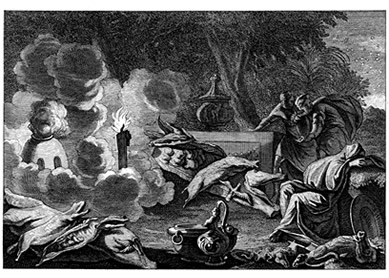Q. Is original sin hereditary according to Romans 5:12? How did the idea of original sin develop?
A. The idea of original sin—a sexually-transmitted fatal condition passed from parents to the unbaptized newborn—was the invention of the early fifth-century North African church, and Augustine was its premier architect.
Prior to Augustine, most theologians had read Paul as saying that humans inherited Adam’s mortality (itself a punitive condition), and a propensity to sin. Augustine, however, insisting that all subsequent human generations were in a literal way “in Adam,” insisted that all future generations inherited not only his penalty, but also his actual guilt.
For this reason, Augustine also argued, unbaptized babies died in Adam’s sin, and so could never attain salvation but were instead eternally condemned. Christ alone was born without the stain of original sin, because he was conceived without sexual intercourse. For a lengthier tour of this theological terrain, and a comparison with other religious thinkers, see Paula Fredriksen, SIN: The Early History of an Idea (Princeton 2012), pp. 114-34 and 141-46.




